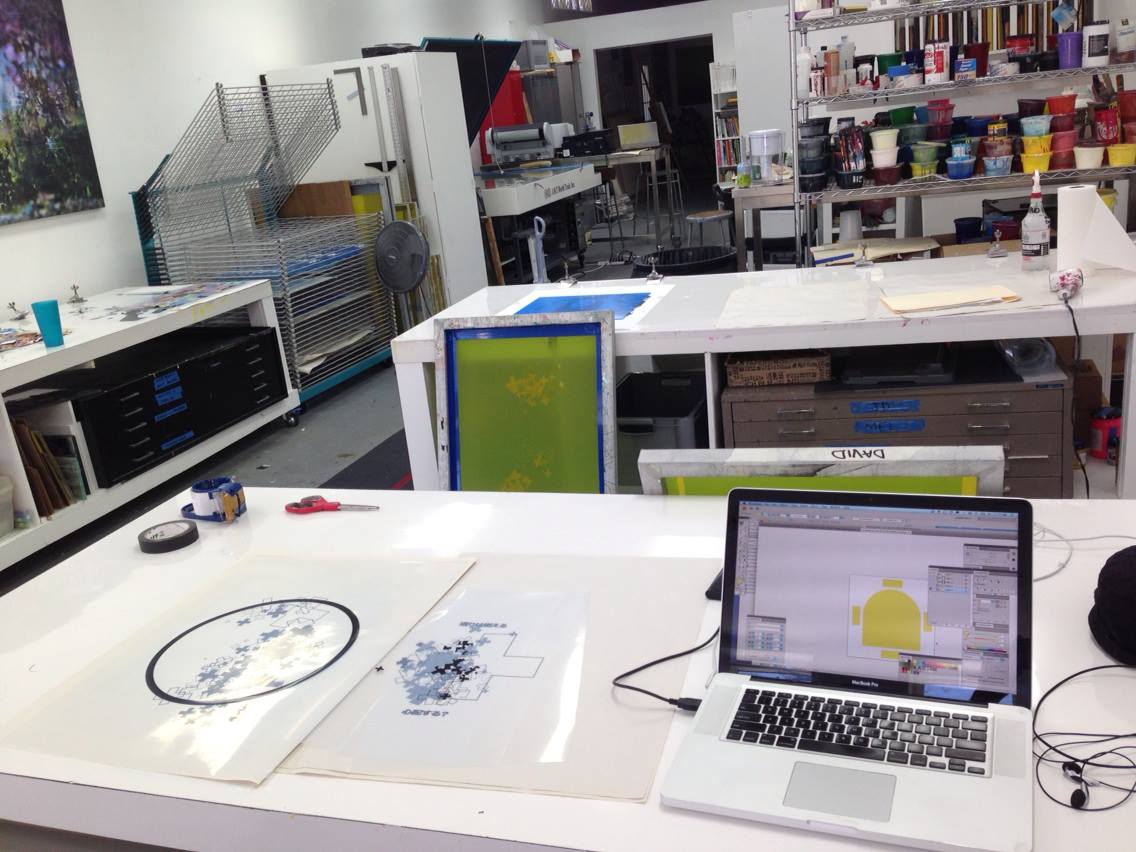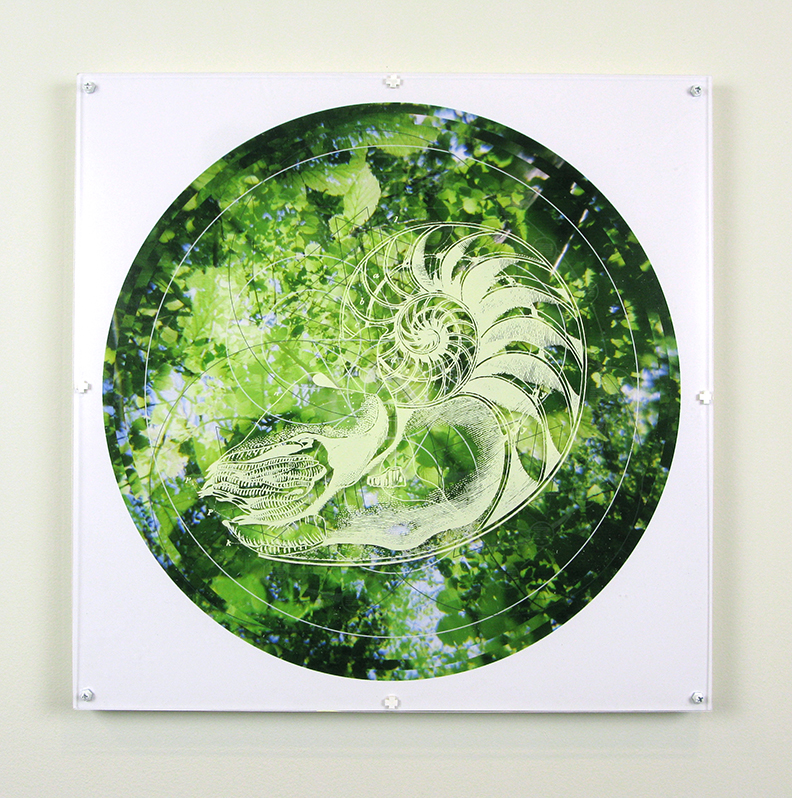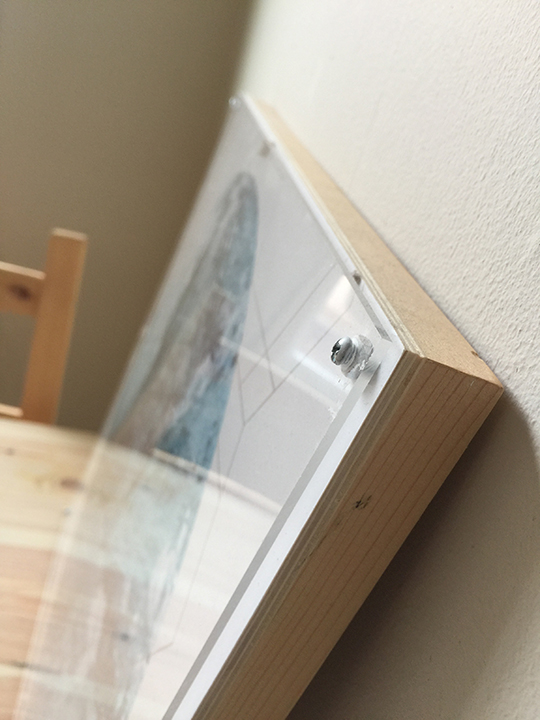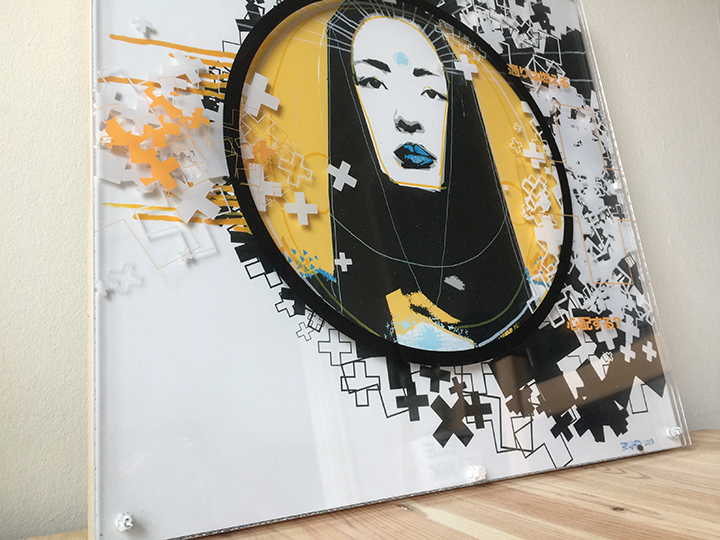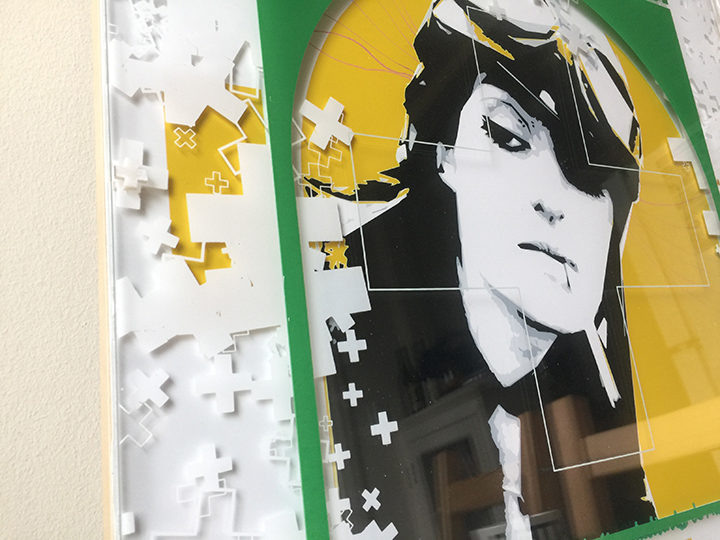Plexiglass Experiments and Screenprinting in D.C.
The other day I was organizing my artwork archives at home and I unwrapped some pieces I produced a few years ago when I worked at OpenStudio DC, a screenprinting studio that was on Florida Ave in Capitol Hill (later moved to Ivy City and now relocating to Baltimore). I started printing there in 2013, and it was a pivotal time for me as an artist - I was just starting to experiment with the transparency film compositions that have become my “style” and I had gotten the urge to do printmaking again after almost 20 years. My undergraduate degree was in printmaking, but I hadn’t been near a studio since 1993.
A typical day working in the studio around 2014
“BROOKLYN CUT-UP”, one of the first transparency film compositions I made back in 2013.
Screenprinting directly onto the transparency film prints.
Around 2013 I had some ideas for artwork that I thought I could materialize through screenprinting, but I wasn’t sure how I would get access to a studio unless I was enrolled in a course at a university or art school. So I began searching for screenprinting classes, and I found OpenStudio DC, which like the name implies, was a collective studio space open to the public for screenprinting. I couldn’t believe my luck, an awesome screenprinting studio that was literally blocks from my house. I took some classes with the owner Carolyn, still a dear friend to this day, and soon enough was trusted with a key to the studio so I could come and go as needed.
The view inside OpenStudio DC
Printing on wood panels
Checking the registration of a screen on the panel before printing.
“Spatial Botany”, two versions.
Printing “Psychedelic Zoology 4”
“Psychedelic Zoology 4” version
At that time there were 4 or 5 printmakers including myself that worked in the studio that were serious about producing art professionally, and with Carolyn we formed a core group within the screen printing community in DC. In fact, It’s probably accurate to say the crew around OpenStudio DC were the screenprinting community in that city.
Each layer of mylar with black shapes represents a different color on the final piece. These 4 colors are for “Psychedelic Zoology 6”
“Psychedelic Zoology 6”, versions
Geometric designs to be printed on photo prints.
The screen attached to clamps on the table swings down to cover the photo and print ink.
Designs printed on photos.
Photos mounted on wood panels
Those were really fun times, I spent almost every weekend printing in the studio, and I even went in on weeknights after coming home from my day job, working until late at night. My work was different from most in that I used screenprinting as a way to make multicolor mono prints on non-traditional surfaces, such as wood, clayboard and plexiglass, and photos, and would assemble the plexiglass and mounted photos into 3D artwork.
The graphic printed on the acrylic sheet is on one side. It is attached to the wood panel (and photo) printed side down.
I experimented with metallic ink on different photo papers and substrates. I did a lot of work in that studio from 2013 to 2016, and although I sold or gave away the majority of the work to friends and family, I still have a few key pieces from those days. The plexiglass pieces in this post, as well as the Plitvice Botany installation, are the progenitors of my most recent foray into screenprinting - the Rainier Botany series. These are the first experiments with layered screen printed graphics on acrylic sheets, and the illustrations, that I pieced together with the hardware by hand.
The plexiglass and wood panel are clamped together, then drilled holes to affix them together with the painted hardware.
These four pieces below - Iceland Geology 1 & 2, Streets Will Burn, and Be Young and Shut Up - are what I still have of those 4 years screenprinting in DC. They’re all heavy, bulky pieces - the acrylic is super thick and on two of the pieces there are two layers, bolted to a wood panel. I’m not sure if I’ll ever sell these last pieces from DC, but I’m also not one to hold onto many things out of sentimentality particularly when living in an apartment in the city where space is a premium.
“Iceland Geology 1”
“Iceland Geology 2”
“The Streets Will Burn”
“Be Young and Shut Up”




